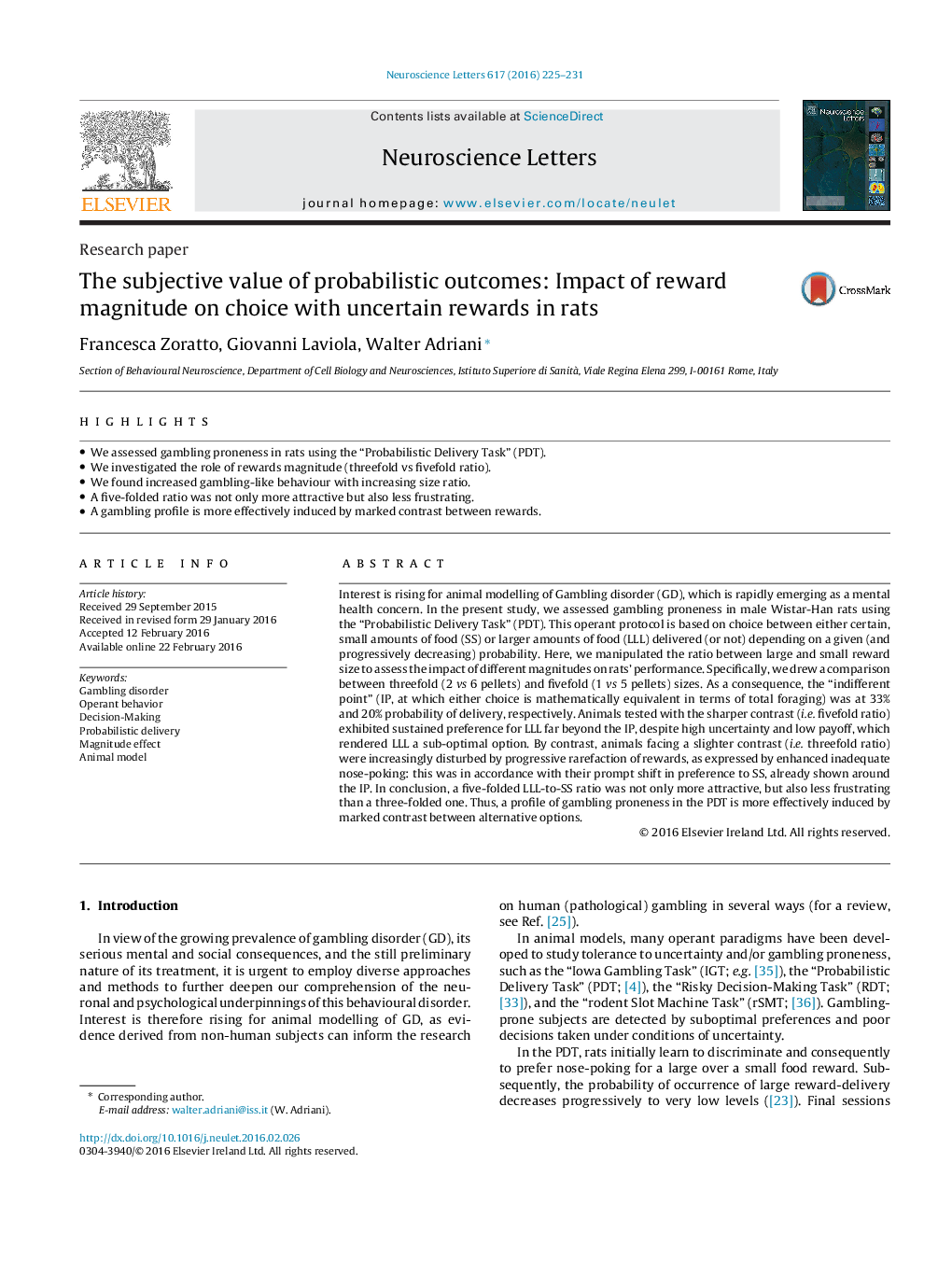| Article ID | Journal | Published Year | Pages | File Type |
|---|---|---|---|---|
| 6279982 | Neuroscience Letters | 2016 | 7 Pages |
Abstract
Interest is rising for animal modelling of Gambling disorder (GD), which is rapidly emerging as a mental health concern. In the present study, we assessed gambling proneness in male Wistar-Han rats using the “Probabilistic Delivery Task” (PDT). This operant protocol is based on choice between either certain, small amounts of food (SS) or larger amounts of food (LLL) delivered (or not) depending on a given (and progressively decreasing) probability. Here, we manipulated the ratio between large and small reward size to assess the impact of different magnitudes on rats' performance. Specifically, we drew a comparison between threefold (2 vs 6 pellets) and fivefold (1 vs 5 pellets) sizes. As a consequence, the “indifferent point” (IP, at which either choice is mathematically equivalent in terms of total foraging) was at 33% and 20% probability of delivery, respectively. Animals tested with the sharper contrast (i.e. fivefold ratio) exhibited sustained preference for LLL far beyond the IP, despite high uncertainty and low payoff, which rendered LLL a sub-optimal option. By contrast, animals facing a slighter contrast (i.e. threefold ratio) were increasingly disturbed by progressive rarefaction of rewards, as expressed by enhanced inadequate nose-poking: this was in accordance with their prompt shift in preference to SS, already shown around the IP. In conclusion, a five-folded LLL-to-SS ratio was not only more attractive, but also less frustrating than a three-folded one. Thus, a profile of gambling proneness in the PDT is more effectively induced by marked contrast between alternative options.
Related Topics
Life Sciences
Neuroscience
Neuroscience (General)
Authors
Francesca Zoratto, Giovanni Laviola, Walter Adriani,
